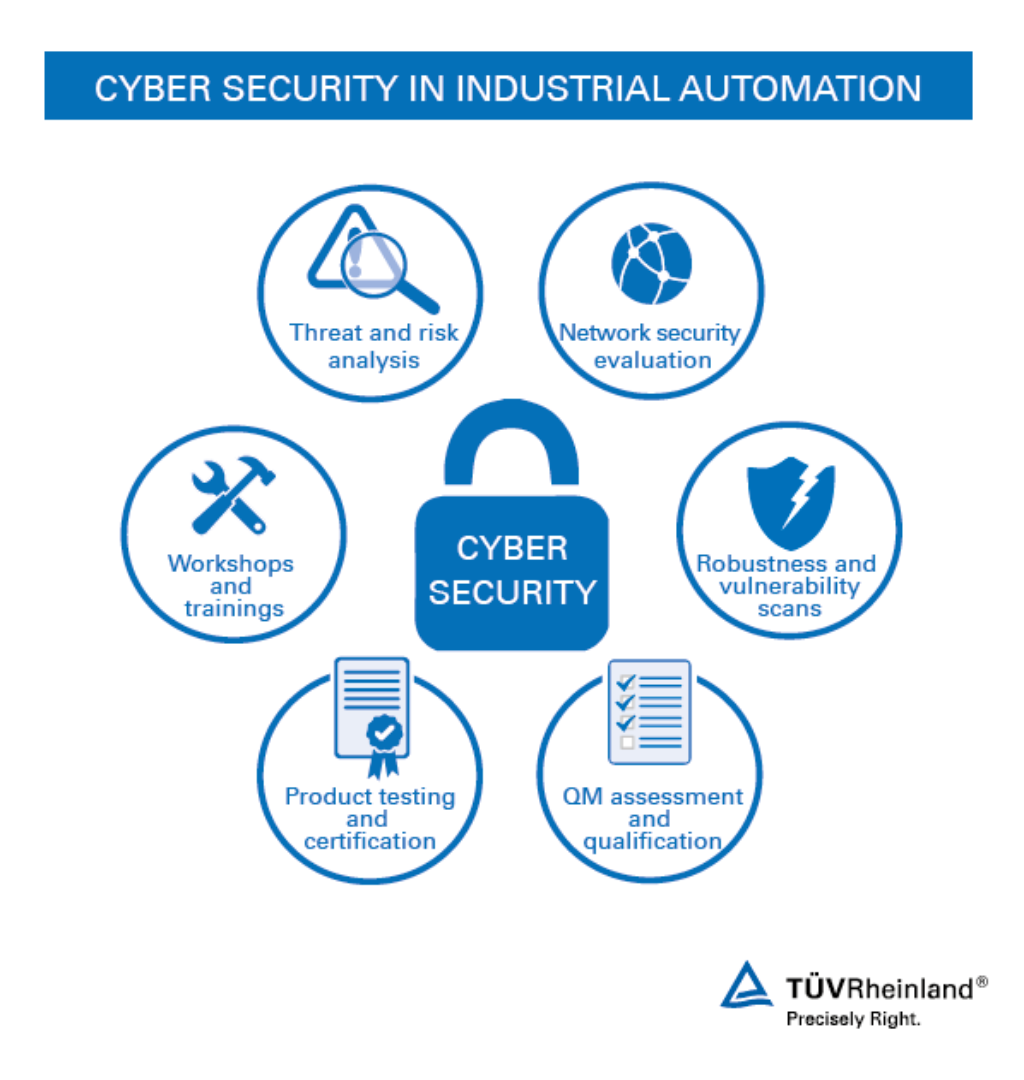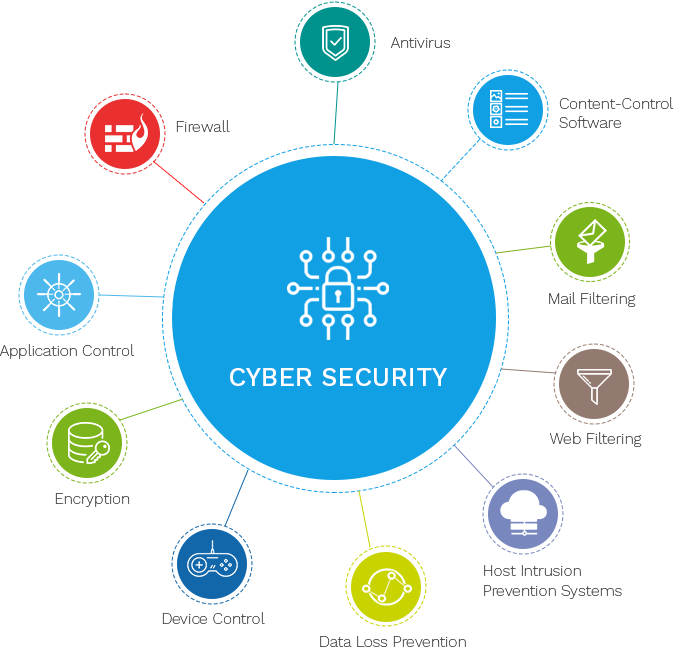Discovering Just How Cyber Safety And Security Works to Secure Your Online Visibility
In today's electronic landscape, safeguarding one's online existence has come to be significantly important, with cyber risks advancing at a disconcerting pace. Cyber safety employs a multifaceted approach, integrating sophisticated technologies like firewall softwares, encryption, and multi-factor authentication to safeguard delicate information. Exactly how do these technologies work with each other to create a seamless guard versus cyber risks?
Recognizing Cyber Threats
In the electronic landscape, cyber hazards represent a powerful difficulty, calling for a nuanced understanding of their nature and potential effect. These hazards encompass a wide variety of malicious tasks orchestrated by individuals, groups, or also nation-states, targeting delicate information, disrupting operations, or causing reputational damages. Comprehending cyber risks starts with determining the numerous types they take, including malware, phishing, ransomware, and distributed denial-of-service (DDoS) assaults.
Malware, or destructive software program, consists of infections, worms, and trojans that infiltrate systems to steal data or cause harm. Ransomware encrypts targets' information, demanding a ransom for its release, positioning significant functional and economic dangers.
Acknowledging the inspirations behind these dangers is vital. By comprehensively comprehending the diverse nature of cyber dangers, organizations can much better anticipate prospective vulnerabilities and tactically assign resources to boost their defenses versus these ever-evolving dangers.
Secret Cyber Security Technologies
As companies strive to guard their digital possessions, key cybersecurity innovations play an important duty in fortifying defenses versus cyber threats. These innovations incorporate a broad spectrum of methods and tools made to protect data honesty, confidentiality, and accessibility. In today's electronic landscape, invasion detection systems (IDS) and breach avoidance systems (IPS) are pivotal. IDS monitor network website traffic for suspicious activities, while IPS proactively obstruct possible risks, ensuring real-time security.
Moreover, anti-viruses and anti-malware solutions remain fundamental in identifying and reducing harmful software application. They utilize heuristic and signature-based methods to find well-known and unidentified risks. Endpoint detection and response (EDR) systems further enhance security by giving comprehensive visibility into endpoint tasks, making it possible for quick event reaction.
Identity and accessibility monitoring (IAM) modern technologies make certain that just authorized users access to vital resources, thus decreasing the risk of unapproved data access. Multifactor authentication (MFA) includes an added layer of safety, needing users to give several verification variables.
Furthermore, safety and security information and occasion management (SIEM) systems accumulation and evaluate security information, offering insights into prospective vulnerabilities and helping with proactive danger administration. These modern technologies collectively develop a durable structure, equipping organizations to keep a resistant cybersecurity position.
Role of Firewalls and Encryption
Firewall softwares and file encryption are important elements of a robust cybersecurity method, each offering an unique yet complementary function in securing digital atmospheres. Firewall programs act as barriers in between trusted inner networks and untrusted exterior entities. By controlling inbound and outbound network traffic, they prevent unapproved access to data and systems. Firewall programs use predefined safety and security policies to obstruct or permit data packets, successfully protecting delicate info from cyber risks. They are the initial line of protection, filtering web traffic and making certain just legitimate interactions are permitted.
File encryption, on the other hand, transforms understandable data right into an inscribed style that can only be decoded with a specific cryptographic secret. This procedure makes certain that information continues to be confidential and safe throughout transmission or storage. Also if obstructed, encrypted information is provided pointless to unauthorized customers without accessibility to the decryption key. File encryption is crucial for shielding sensitive info such as economic data, individual identification information, and exclusive company info.
Together, firewall programs and encryption supply a thorough defense reaction. While firewall softwares manage access and shield networks from unauthorized entrance, encryption safeguards data integrity and privacy. Their incorporated application is essential in mitigating risks and guaranteeing the safety and security of electronic possessions in a progressively interconnected globe.

Significance of Multi-Factor Verification
While firewalls and security form the foundation of cybersecurity, boosting defenses additionally calls for the implementation of multi-factor authentication (MFA) MFA includes an added layer of safety and security by requiring individuals to confirm their identification with two or more different factors prior to accessing to delicate information or systems. These elements normally consist of something the user recognizes (a password), something the user has (a safety and security token or smartphone), and something the user is (biometric verification such as a fingerprint or facial acknowledgment)
The significance of MFA in securing on the internet visibility is critical in today's electronic landscape. With cyber risks ending up being increasingly sophisticated, relying only on conventional password-based authentication leaves systems at risk to violations.

Behavioral Analytics in Cyber Security
Behavior analytics represents a critical advancement in cybersecurity, supplying a sophisticated technique to threat detection and prevention. By assessing patterns in individual habits, this technique identifies anomalies that might show potential cyber hazards. Unlike standard safety and security procedures, which often count on predefined regulations and signatures, behavioral analytics leverages maker knowing and analytical versions to develop a standard of normal activity. When deviations from this standard happen, it causes notifies for more examination, making it possible for much faster response times to prospective breaches.
This technology is especially reliable in finding expert hazards and zero-day attacks, which are frequently missed by standard security systems. Expert dangers, where individuals within a company abuse gain access to benefits, can be especially harmful and hard to find. Best Cyber Security Services in Dubai. Behavioral analytics gives a layer of examination that can capture subtle deviations in habits, click here for more such as unusual gain access to like this patterns or information transfers, before they escalate into substantial security incidents
Furthermore, the dynamic nature of behavior analytics enables it to adapt to evolving dangers, supplying constant security as cyberattack approaches transform. As companies significantly depend on digital facilities, including behavioral analytics right into cybersecurity approaches makes certain a durable protection, preserving and guarding sensitive data rely on electronic interactions.
Final Thought
To conclude, the multifaceted approach of cyber protection, including technologies such as firewall softwares, security, multi-factor verification, and behavior analytics, plays an essential role in protecting online presence. By filtering traffic, securing information transmission, requiring multiple confirmation methods, and checking individual task for abnormalities, these modern technologies jointly resolve the intricacies of modern-day cyber risks. This split protection not just safeguards monetary and individual info but additionally guarantees constant defense in an ever-evolving electronic landscape.

As organizations make every effort to guard their digital assets, key cybersecurity modern technologies play description an important role in fortifying defenses against cyber dangers. Firewalls make use of predefined protection policies to obstruct or allow information packets, properly shielding delicate details from cyber dangers.This technology is particularly efficient in spotting expert hazards and zero-day assaults, which are commonly missed out on by traditional security systems. By filtering system traffic, protecting information transmission, calling for several confirmation approaches, and keeping track of individual task for anomalies, these modern technologies jointly attend to the intricacies of modern cyber hazards.